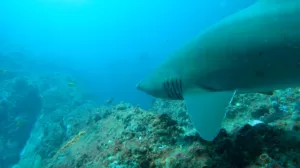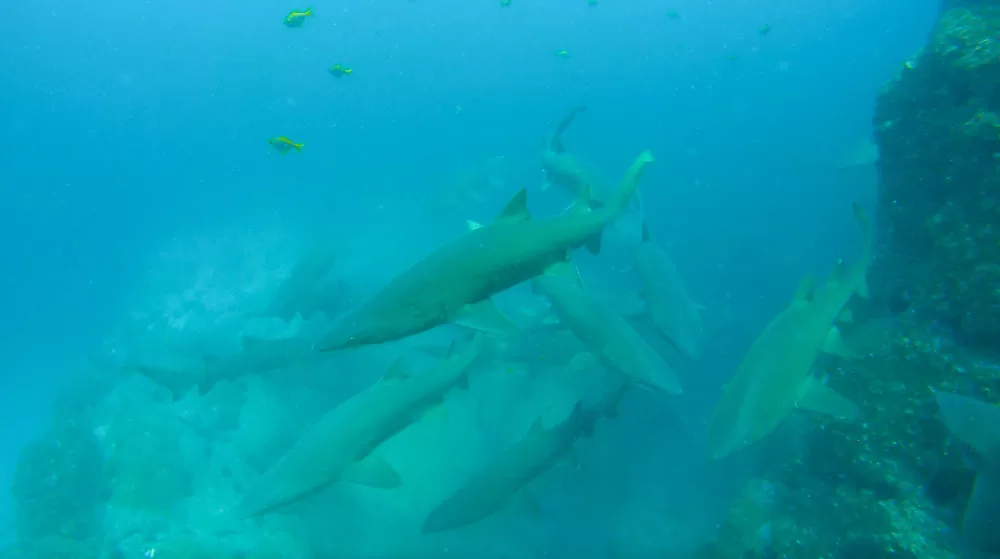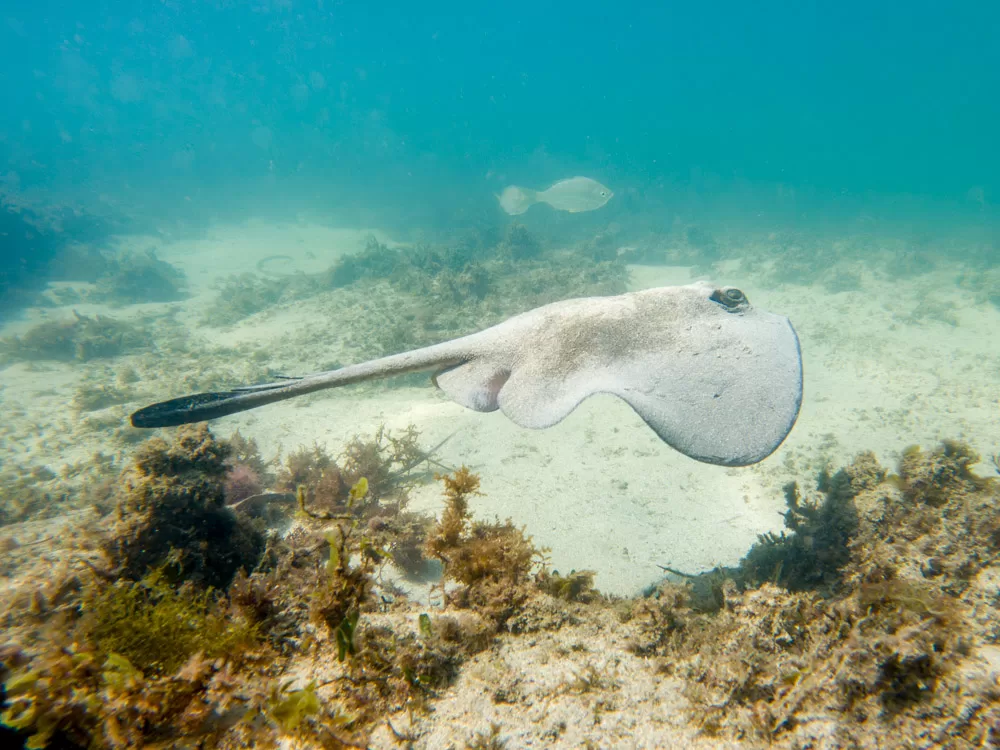Also referred to as the Sand Tiger Shark globally, the Grey Nurse Shark presents a captivating sight. At around 2-3.2 meters in length, they have a robust, muscular physique that commands respect. Their bulky body is complemented by a unique conical snout and two large dorsal fins set far back. While it may seem they’re sporting a menacing grin due to the numerous, needle-like teeth protruding from their mouth, they are quite benign to humans unless provoked. These teeth are not just for show – they are effective hunting tools, assisting them in catching prey, primarily small to medium-sized fish and squid.
Grey Nurse Shark Lifecycle

Their lifecycle begins in a dramatic fashion. Grey Nurse Sharks are ovoviviparous, meaning that while the females give birth to live young, the early life of these sharks is rather Darwinian. The first embryo to hatch in the mother’s womb consumes its unhatched siblings in a survival tactic known as ‘intrauterine cannibalism’. This might seem savage to us, but for them, it’s a fascinating aspect of their survival strategy in the wild. Typically two pups are born every two years, contributing to their slow population growth rate.

Snorkeling with Grey Nurse Sharks
Snorkeling with these magnificent creatures can be an unforgettable experience, but there are some important rules to follow. Respect is crucial – remember that we’re guests in their underwater home. They are typically docile, but like any wild animal, they may react if they feel threatened. Therefore, avoid making sudden movements, keep a safe distance, and never attempt to touch or feed them.
Want to spot new fish species? This book by Nigel March documents 100 diving and snorkeling spots across Australia, and which species might be found there.
Grey nurse sharks usually patrol reef gutters and caves at a depth that sits beyond a snorkelers reach. For scuba divers, there are several places along Australia’s east coast offer opportunities for Grey Nurse Shark encounters. Magic Point in Maroubra, Fish Rock Cave in South West Rocks, and Julian Rocks in Byron Bay are among the renowned hotspots.

The only location where I have personally been able to meet Grey Nurse Sharks while snorkelling is in Bushrangers Bay, New South Wales. Here, when visibility is clear, you can see the local colony swimming at the bottom of the bay’s gully. If you decided to swim down for a closer look, don’t underestimate the dept!
Distribution and Conservation
Historically, Grey Nurse Sharks were abundant along the Australian coast. However, over the years, their numbers have declined significantly due to human activities such as overfishing and habitat destruction. They are now listed as a critically endangered species on the east coast of Australia.

Australia has implemented several protective measures, including the designation of protected areas where these sharks frequently congregate, and restrictions on fishing activities in these zones. Conservation organizations and researchers are continuously working on methods to increase their numbers and ensure their survival.
Behaviour and Character
Despite their fierce appearance, Grey Nurse Sharks are known for their calm demeanor. They spend their days in large, sedentary groups in deep underwater caves and gutters, displaying a remarkable level of social behavior. Most active at night, these sharks spend their evenings hunting solitary.
They possess a unique habit of gulping air from the surface, storing it in their stomach. This air allows them to float motionless in the water, conserving energy and providing an advantage when hunting. It’s fascinating to observe these creatures in their natural habitat, floating effortlessly, their eyes on the lookout for their next meal.
The Future for Grey Nurse Sharks
As a top predator, the conservation of Grey Nurse Sharks is critical for maintaining the balance in our marine ecosystems. Their decline could lead to unpredictable consequences for ocean health. Each one of us can play a part in their survival – whether that’s by promoting responsible snorkeling and diving practices, supporting conservation organizations, or simply by raising awareness about their plight.
The more we understand and appreciate creatures like the Grey Nurse Shark, the more we can do to protect them. So, let their story inspire you to explore further into the wonders of marine life and become a champion for ocean conservation. After all, our health is inextricably linked to the health of our oceans.
More sharks

Distribution
Tropical and temperate waters in the Atlantic, Indian and western Pacific Oceans. It is recorded from all states of Australia except Tasmania.
Facts
Max Size: 320 cm
Depth: 1-191 m
Lifespan: Up to 30 years
Risk and Safety
Low risk, Grey Nurse Sharks will avoid contact. Keep your distance, do not swim in the shark’s patrolling path.
Conservation
IUCN Status: Critically Endangered
Population Trend: Decreasing



